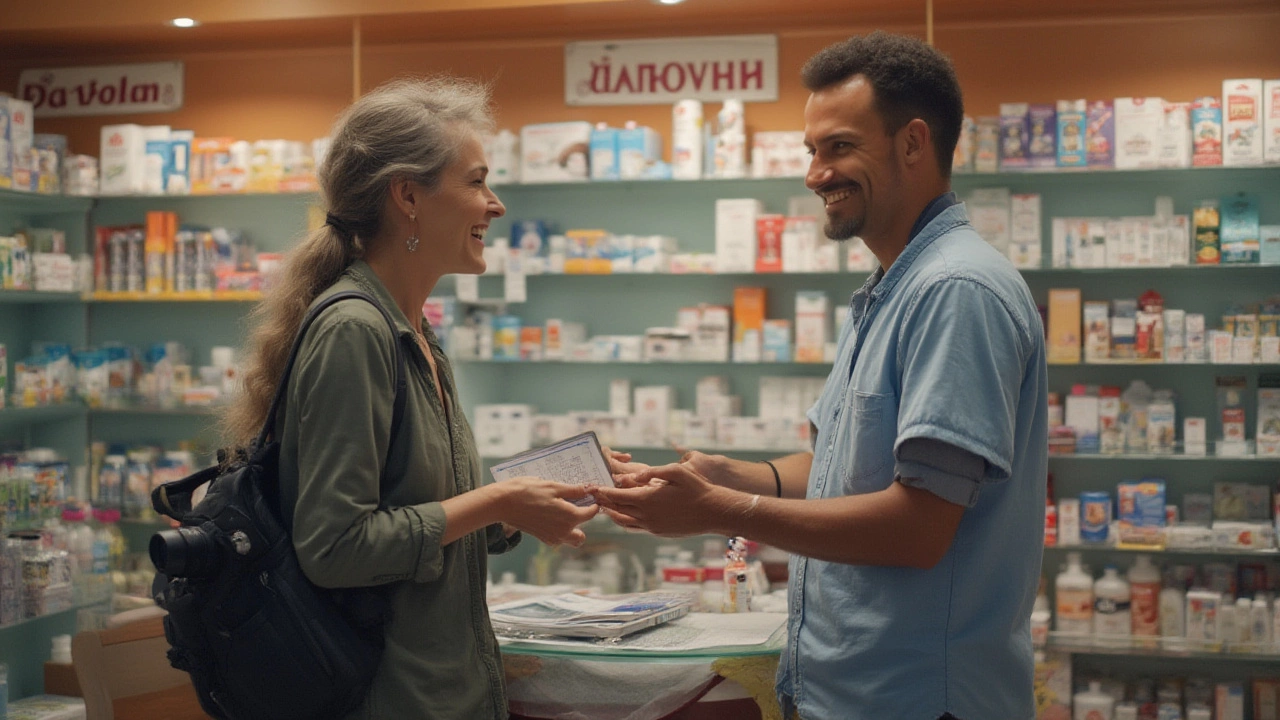Imagine road-tripping through the Rockies or exploring Toronto when that familiar tickle in your throat turns into something worse. Suddenly, you're thinking less about poutine and more about waiting rooms. If you're an American, you probably want to know: can you see a doctor in Canada if you need one? People talk about the Canadian healthcare system as if it’s some legendary unicorn of healthcare—universal, free, and all-access, even for visitors. But is it really?
How the Canadian Healthcare System Works for Non-Residents
First off, let's clear up one big misconception: Canada’s healthcare system isn’t truly "free"—at least not for tourists or casual visitors. Canadians fund their healthcare through taxes and, in exchange, enjoy coverage for most essential services. But for folks from the US or anywhere else, those benefits don’t automatically apply. The good news? Canadian clinics, urgent care, and hospitals don’t slam the door in your face if you show up with a US accent. Canada offers basic urgent and emergency medical care to *anyone* who needs it—even non-residents. It’s written into their healthcare ethics.
If you walk into an ER in Vancouver with a broken arm, you won’t get turned away. But there’s a catch: as an American, you’re expected to pay out of pocket or show proof that insurance will cover you. For a regular doctor's visit or walk-in clinic, prices usually run from CAD$50 to CAD$250 per appointment. Emergency services and hospitalizations can climb into the thousands, especially if you require surgery, specialized testing, or a lengthy hospital stay. In a 2023 CBC report, the average ER visit for a non-resident cost about CAD$913—just for the ER assessment, not counting x-rays, blood work, or treatment.
Here’s a snapshot of typical costs for Americans needing care in Canada:
| Service | Average Cost (CAD) |
|---|---|
| Walk-in Clinic Visit | 75 – 250 |
| Emergency Room Visit (simple) | 500 – 1,000 |
| Hospital Stay (per day) | 2,000 – 4,000 |
| Minor Surgery | 2,000 – 8,000 |
Might sound steep, but compare it to American medical bills without insurance and suddenly, it’s not so shocking. Canada’s system is more transparent with fees. There are usually no surprise admin charges or hundreds of mysterious line items. But you’ll need to pay up front, often by credit card or cash. Don’t expect to set up a payment plan like you might in the States—you’ll need to sort out reimbursement with your US insurance when you get home.
If you’re already sick with a chronic condition, planning ahead is crucial. Most Canadian providers will prescribe refills for common medications with proof of your ongoing prescription back home, but they won’t do authorizations for complex procedures or “elective” treatments unless it’s truly an emergency. Bringing documentation—recent test results, medication lists, a doctor’s note—makes the process way smoother.

What to Do If You Get Sick or Injured in Canada
Getting quality care in Canada as an American is straightforward, but knowing the right steps can save you a ton of stress (and money). First, if it’s a real emergency—a heart attack, stroke, broken bone, sudden severe illness—head straight for the nearest hospital ER. No phone call needed. Canada’s emergency departments are legally required to treat anyone, citizen or not. The triage nurse won’t ask about your passport until they’re sure you’re stable.
For non-urgent but still pressing stuff—think strep throat, sprained ankles, high fevers that won’t go away—head to a walk-in clinic. Major cities like Montreal, Calgary, and Toronto have dozens, and you can find them quickly with Google Maps or apps like Medimap, which even lists real-time wait times. Clinics are open to all and don’t require an advance appointment in most cases.
If you just need a prescription refill or minor advice, some pharmacies house "pharmacist clinics" where you can get basic assessments, renew prescriptions, and even get certain minor treatments all in one stop. Shoppers Drug Mart, one of the biggest pharmacy chains, is famous for this. Many also offer virtual visits—especially handy if you’re traveling through rural parts of Canada where actual clinics may be rarer than a moose on the highway.
What if you don’t speak French and find yourself in Quebec? Don’t panic. Most clinics and hospitals in major cities are bilingual, and staff are used to dealing with English speakers. Outside cities, pointing and gesturing gets you surprisingly far, and Google Translate is worth its weight in gold.
One pro tip: always have your passport and proof of US health insurance handy, just in case. Many doctors and clinics ask for ID and insurance details when you check-in. If you have travel health insurance (a must for any trip over the border), be ready to show your policy number. Keep digital or paper copies—Wi-Fi can be flaky in some areas.
When it’s time to pay, ask for a detailed invoice. Many American health insurance providers, and all travel medical insurers, require an itemized Canadian medical bill to reimburse you. Save everything—receipts, doctor’s notes, even prescription labels. US insurers won’t cover every situation, but urgent ER visits and injuries are usually eligible (subject to your deductible and policy rules). As of January 2024, about 32% of Americans traveling to Canada bought extra travel health insurance, according to travel analytics site InsureMyTrip. People with pre-existing conditions or traveling for longer than two weeks absolutely should get it, even if it’s just for peace of mind.
- Toll-Free Emergency: 911 is Canada’s emergency number, same as the US. It covers ambulance, police, and fire services.
- Hold onto prescription vials or boxes. Canadian pharmacies can use your US script to issue temporary refills, especially for blood pressure, diabetes, or asthma meds. Bulkier narcs and stimulants are another story—these are regulated hard, and you’ll need clear paperwork for any controlled drugs.
- Many clinics post fees online. Check before you visit to avoid sticker shock.
- If you’re using travel insurance, call the insurer’s emergency number—many have partnerships with Canadian clinics and can arrange payment for you directly.
The main message? Don’t be afraid to seek help just because you’re an American. Canadian doctors and nurses are known for being friendly and helpful, and nobody’s going to let you suffer in silence. Just have your paperwork ready, prepare to pay up front, and keep all your receipts for claiming back home.

Tips, Pitfalls, and Real-World Stories from Americans in Canadian Healthcare
Every year, over 15 million Americans visit Canada, and a small but steady number end up needing medical attention. If you rummage through Reddit threads or expat Facebook groups, you’ll find wild tales—some stressful, some reassuring. One Texan traveler described breaking an ankle in Banff, getting top-notch care in Calgary’s hospital, and being home that night, albeit with a crutch and a CAD$2,400 medical bill. His US health insurer reimbursed most of the cost, minus a deductible, because he kept every single receipt. Another visitor described being treated for a UTI at a Toronto clinic; she was out in an hour, $110 lighter, with antibiotics in hand and no crazy paperwork to fill out.
But not every story is smooth. Some folks run into long ER wait times—yep, the rumors are true. Canadian ERs can be swamped, especially on weekends and during flu season. Non-urgent cases (like coughs or minor infections) get lowest priority and wait times can drag into the 4-8 hour range. Clinics are usually much faster. The record-holder for urban waits? A 2022 Montreal hospital reportedly logged a 14-hour ER wait at the height of the COVID-19 pandemic, though visitors with life-threatening issues are always fast-tracked.
It’s smart to have backup plans. If you wear contacts or need specific medications, bring extra—it can be a pain (and costly) to restock on short notice. Not all US health plans cover out-of-country care, and the rules for Medicare are strict—Medicare doesn’t pay for Canadian clinics or hospitals except in rare border situations.
Personal tip: Download your insurer’s mobile app before you go. It’s often easier to submit claims if you have the app, and some even have direct-pay features with Canadian providers. Keep family or friends in the loop if you’re traveling solo, in case you end up needing someone to vouch for you or help with paperwork back home.
- Prescription drug prices in Canada are famously lower than in the US, but don’t assume you can stock up for the year. Canadian pharmacies aren’t allowed to fill big batches for tourists, and they report controlled substance sales to health authorities. Stick to what you genuinely need.
- Don’t try to use your US insurance card like a Canadian health card. The systems don’t talk to each other. You’ll pay first, claim after.
- If you’re a snowbird (someone who spends months in Canada), look into longer-term international health policies. Some American retirees even split care between the two countries depending on cost, scheduling, and wait times.
- Pro tip: Dental and eye care aren’t free for Canadians OR for tourists. Expect to pay out of pocket at private offices, and yes, they take American credit cards.
Moving from state-side red tape to Canadian courtesy, the biggest surprise for many Americans isn’t the price tag—but the attitude. Patients are rarely asked intrusive financial questions on the spot. Even the invoices are simple. At the end of the day, if you’re hurt or unexpectedly sick, you’ll get help, a bill, and a story to share. Just be smart about insurance, have your documents ready, and don’t let medical nerves ruin your Canadian adventure.
